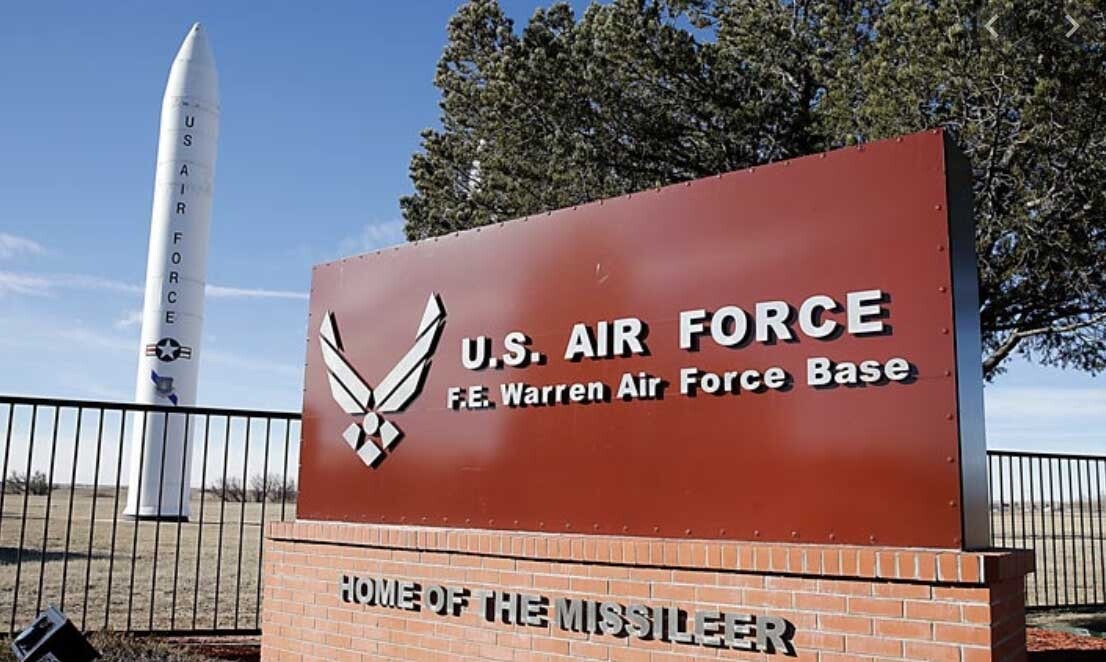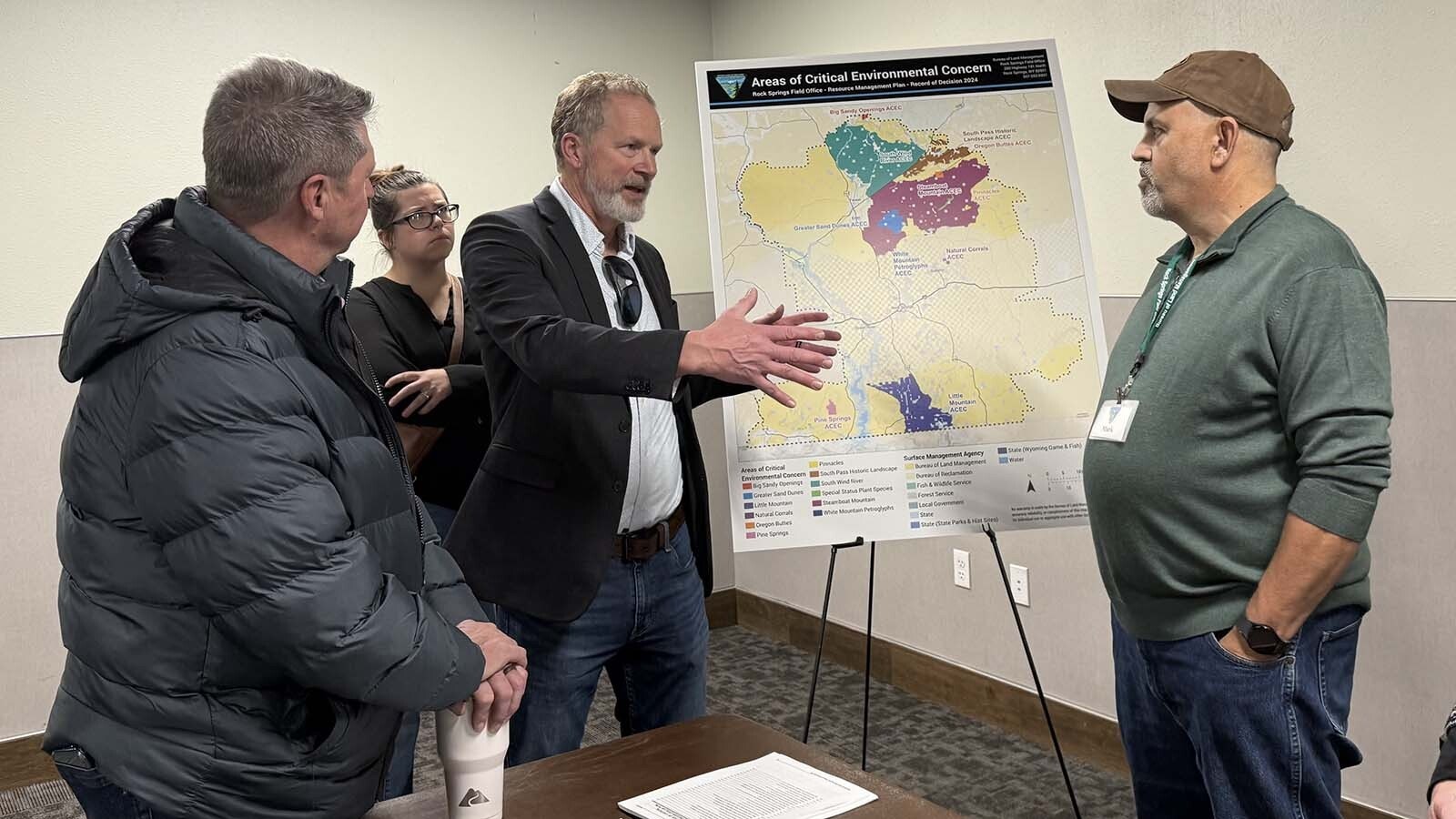The last time Americans gave any serious consideration to the prospect of nuclear war, Rocky Balboa was fighting in the fourth installment of the Rocky movie franchise, beating the steroid-injecting Russian heavyweight Ivan Drago.
If the situation in Ukraine escalates, there’s a real concern the world could face a nuclear war. If that terrible situation were to arise, what would happen to Wyoming?
According to modeling by NUKEMAP, a direct hit to Cheyenne — the Cowboy State’s most likely target in a nuclear exchange — would result in more than 30,000 instant deaths.
It gets worse from there.
Just A Bluff?
In late September, Russian President Vladamir Putin said he would use “all available means to protect Russia and our people,” adding that his posturing wasn’t a “bluff.”
While he backtracked the comments a month later, The New York Times reported he recently met with Russian military leaders to discuss how to use tactical nuclear weapons in Ukraine.
In response to that meeting, President Joe Biden said the world hasn’t been this close to nuclear Armageddon since the 1962 Cuban missile crisis.
Col. Tucker Fagan said the hard thing about trying to determine the risk of nuclear war is the difficulty in trying to get inside the mind of Putin. But there is also a difference in culture between the West and Russia that at least makes the horror of nuclear conflict at least a possibility.
Fagan, who lives in Cheyenne, spent 30 years in the U.S. Air Force, where he was head of the Joint Chiefs of Staff Nuclear Section. He led the team that created the so-called “nuclear football” for President Ronald Reagan, the briefcase with information that allows the president to authorize a nuclear strike.
Do What I tell You
To understand how Russians think when it comes to military matters, Fagan tells the story of when Gherman Stepanovich Titov, the second Russian in space, visited Cheyenne.
Fagan and Titov were sitting outside the front gate of F.E. Warren Air Force Base and military personnel were driving away from the base. Titov asked who were all the people leaving the base. Fagan told the Russian that their rank was denoted by stripes on the windshields of their cars. Titov was surprised to see officers and enlisted personnel freely leaving.
“In Russia, they’d never come back,” Titov told Fagan.
Unlike America’s all-volunteer military, many of the Russian soldiers fighting in Ukraine are conscripted.
“That’s what kind of fighting force they have,” Fagan said. “It’s, ‘Do what I tell you, or I’m gonna shoot you.’”
“Did You Ever See The Movie ‘Red Dawn?’”
The mindset speaks to a military order that doesn’t consider human life the way we do in the West, Fagan said, when it comes to fighting a war. He speculates this could play into how Russia would select targets in a nuclear exchange.
Cheyenne is often believed to be a prime target for a nuclear strike because of the nuclear launching capabilities in the area. However, Fagan said that after launching their missiles, the silos around Cheyenne wouldn’t be able to be reused without extensive refurbishing. So, destroying what remains wouldn’t serve a lot of strategic value.
With nuclear proliferation treaties limiting the number of nukes in play, Fagan said Russia might think more strategically.
If America were attacked by Russia, what would Americans do?
“Did you ever see the movie Red Dawn?” Fagan said. “We’re gonna fight in the streets just like Ukraine. We’re gonna fight everywhere.”
So, if you only have so many nukes to launch at an enemy that’s going to have a strong will to fight back in a prolonged conventional war after the nuclear strike, it makes more sense to eliminate as many potential soldiers as possible.
Fagan speculates, Russia would likely drop nuclear weapons on population centers — big cities.
That means Cheyenne might not receive a direct hit.
Now The Bad News
That’s the good news, assuming it’s true — which is anyone’s guess. The bad news is, right or wrong, the prospect of nuclear war is pretty horrible.
The size of the blast of a nuclear weapon is measured based on a comparison to TNT. So, the blast that hit Hiroshima in Japan in the last days of World War II was a 15-kiloton bomb, or the equivalent of 15,000 tons of TNT.
There are two basic types of nuclear weapons: tactical and strategic. Tactical nuclear weapons are relatively small and launched from mobile vehicles or dropped from aircraft. Small nuclear weapons in the modern era yield somewhere between 1,000 tons of TNT and Hiroshima.
For comparison, the Oklahoma City terrorist bombing was the equivalent of 2.5 tons.
The kinds of nukes that would be sent over from Russia in intercontinental ballistic missiles would be in the strategic yield range. The standard size is somewhere between 500,000 tons and 1 million tons. Russia holds the record for the largest nuclear bomb detonated on planet Earth, a nuke known as the Tsar Bomb, which yielded 50 million tons.
Could You Survive Armageddon?
Alex Wellerstein, a historian of nuclear weapons and professor at the Stevens Institute of Technology, created NUKEMAP, which allows users to pick targets and simulate the effects of a nuclear blast on their hometown.
There’s a lot of guesswork that goes into what the impacts would be if a nuclear weapon were to actually fall on Cheyenne — such as the yield, if it’s detonated on the ground or in the air, how high the detonation is and how windy it is on the day the nukes fall.
For the sake of illustration, let’s say, on the day Putin decides to bring about the end times, winds are a mere 7 mph out of the southeast in Cheyenne. The missile that delivers the blow to Wyoming’s capital city is 500 kilotons, about the equivalent of the Ivy King, which the U.S. tested in the South Pacific in 1952. And let’s say, while aiming for F.E. Warren Air Force Base, the missile manages to land on the state Capitol building.
According to NUKEMAP, 31,260 people die instantly. Another 26,390 are hurt, most of which would be severe, including third-degree burns.
A crater 1,000 feet wide and 230 feet deep would open up beneath the blast on land that once held the Capitol. The fireball would be about 2,400 feet wide, which would engulf most of downtown Cheyenne. An area 1.5 miles wide would be hit with radiation doses that would be lethal within a month for anyone in the zone.
That zone would go nearly as far as Dell Range Boulevard. About 15% of those who survive in the zone would likely die of cancer eventually.
The zone that would produce third-degree burns would go about 3 miles in all directions. The fallout corridor, in which people would get severe radiation exposure — potentially lethal over time — would go nearly as far as Casper.
The mushroom cloud would rise 10 miles over Cheyenne and be more than 12 miles wide.
By most estimates, the Red Desert would be the safest area from the impacts of nuclear blasts and the subsequent fallout.
War Never Changes
Of course, Fagan could turn out to be right and Russia decides to hit major cities with his treaty-limited arsenal. Running the same simulator with the bombs falling on Fort Collins and Denver, Cheyenne would be spared, but Laramie would be directly in the fallout corridor, which would extend all the way to Medicine Bow. Unless the wind shifts 10 degrees to the east, in which case the fallout would land on the Capitol.
Of course, anyone surviving the day has a whole new set of horrors to contend with afterward. Fagan said that besides eliminating Americans, bombing population centers destroys the nation’s infrastructure. That means no electricity, no internet and no basic services, such as clean drinking water and medical care.
Wyoming would have a lot of coal mines and farms, and if it did get passed over by the bombs, survivors may have a safe zone from which America would rebuild.
Lt. Col. Daniel Davis, a senior fellow for Defense Priorities, a military think tank, told Reason that Biden’s stated policy to help Ukraine no matter what until Russia withdraws to its former borders risks dragging the United States into a very high nuclear risk.
The problem for Putin is, if he doesn’t win the war with Ukraine, his power – and possibly his life – would be in danger. If more nations get pulled into the war, how he responds is anyone’s guess.
“There’s no way to discern what’s in his brain,” Fagan said. “Can he walk away from the war in Ukraine and remain in power? Unlikely.”





